Double Trouble State Park
Our journey into the Pine Barrens officially began with an afternoon at Double Trouble State Park. Located in Bayville, NJ, Double Trouble covers over 8000 acres and offers a perfect first look into the ecosystem of the Pine Barrens, especially coming from where we live in central Jersey.
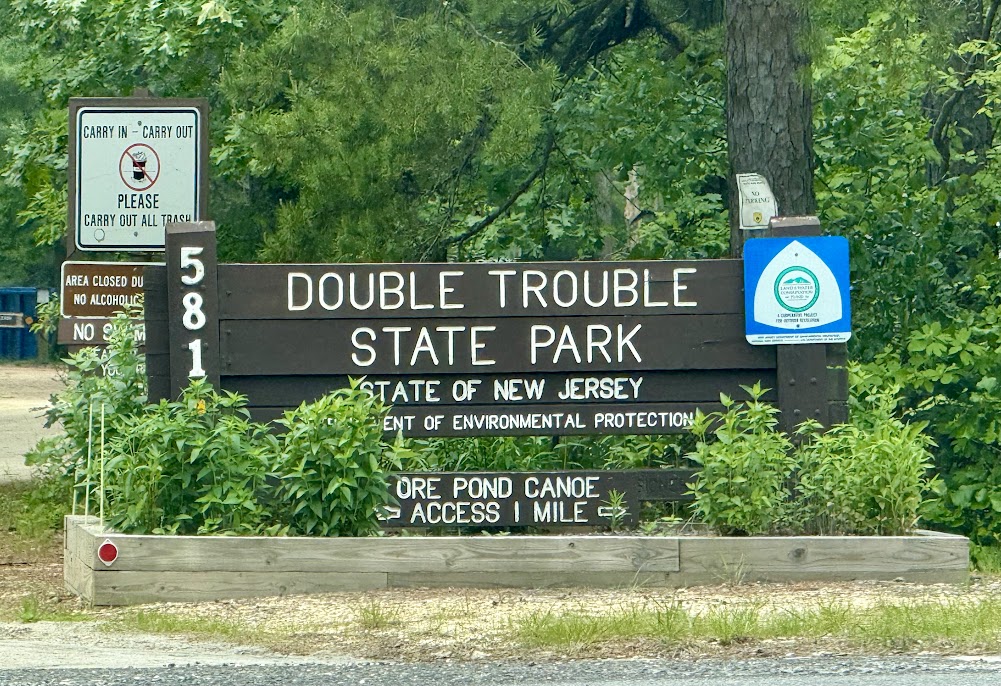
History Of Double Trouble
There’s quite a long history at Double Trouble dating all the way back to the 1700s. In the early years, the land was primarily a supplier of lumber products all over the East Coast. With numerous streams and cedar trees, the raw materials were readily available and there was plenty of waterpower to make this possible. By the mid-1800s, there were two sawmills in production.
Eventually, swampland was created after all of the trees were cut down. This environment, referred to as a bog, was perfect for growing cranberries. What I’ve learned is that acidic soil, layers of sand and peat and plenty of water and sunlight are the ideal conditions for cranberries. All of these can be found in a bog.
In the 1860s, cranberry production began and in the early 1900s, the Double Trouble Company was created. The Double Trouble Company became one of the largest cranberry growers in New Jersey. Eventually the Company wasn’t making enough money anymore and the land was sold to the state in 1964. Cranberry production at Double Trouble officially came to an end in 2010. The village still stands today and is part of the National Register of Historic Places.
Double Trouble Village
Located right off the parking lot, there are fourteen buildings that make up the historic village including:
- A one-room schoolhouse that was used until the end of the 1914-15 school year
- Homes for the Foremans of the entire operation
- A sorting and packing house where cranberries were packed by size and quality
- A blacksmith and repair shop
- A general store for the villagers to get goods such as oatmeal, flour, pork, canned salmon and sardines and sugar
- Shower rooms for the men and women, a bunk house for the single workers and cottages for families during the harvest season (Labor Day to Thanksgiving)
- A building to dry and sort wet cranberries and store farm equipment
- A sawmill for production of lumber products to either be sold or used in the village
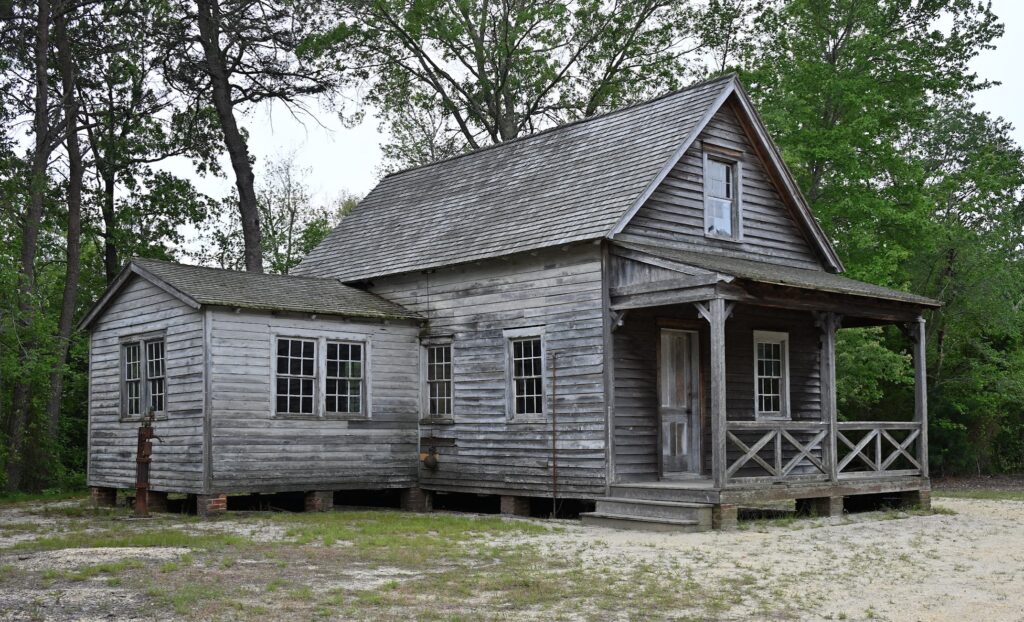
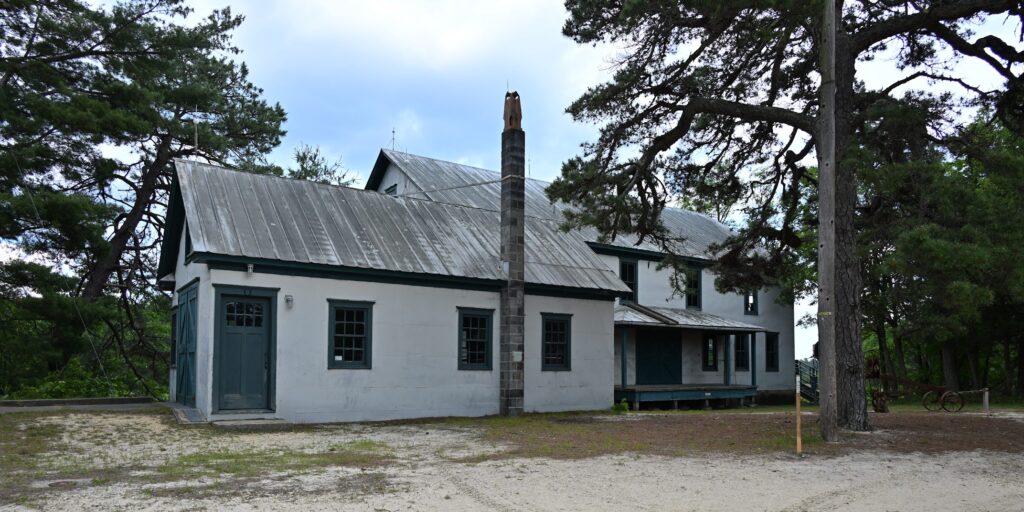
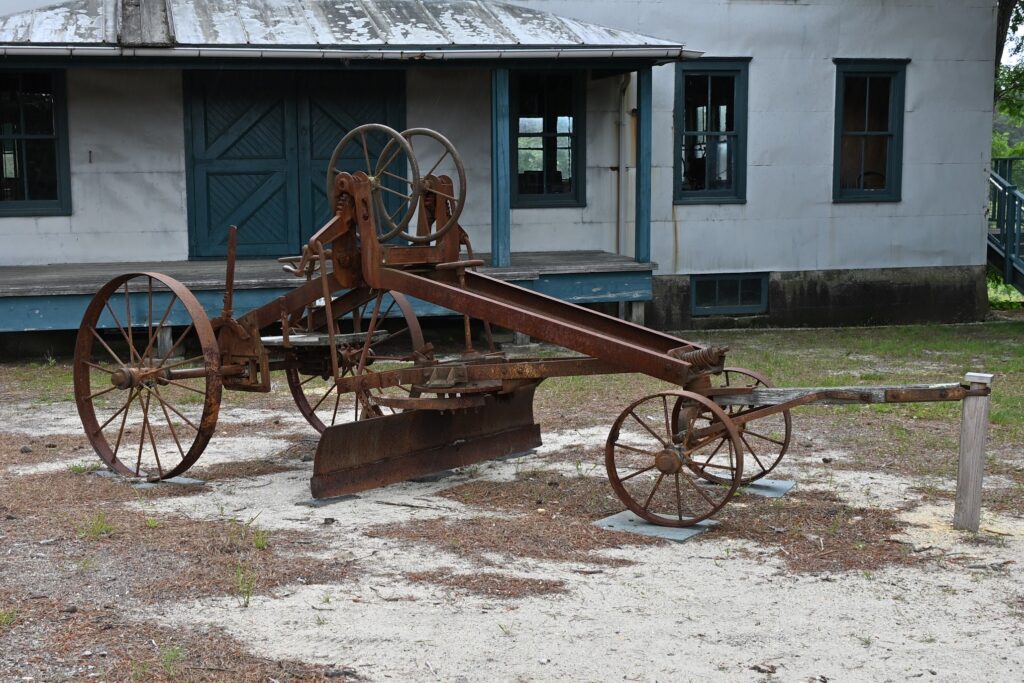
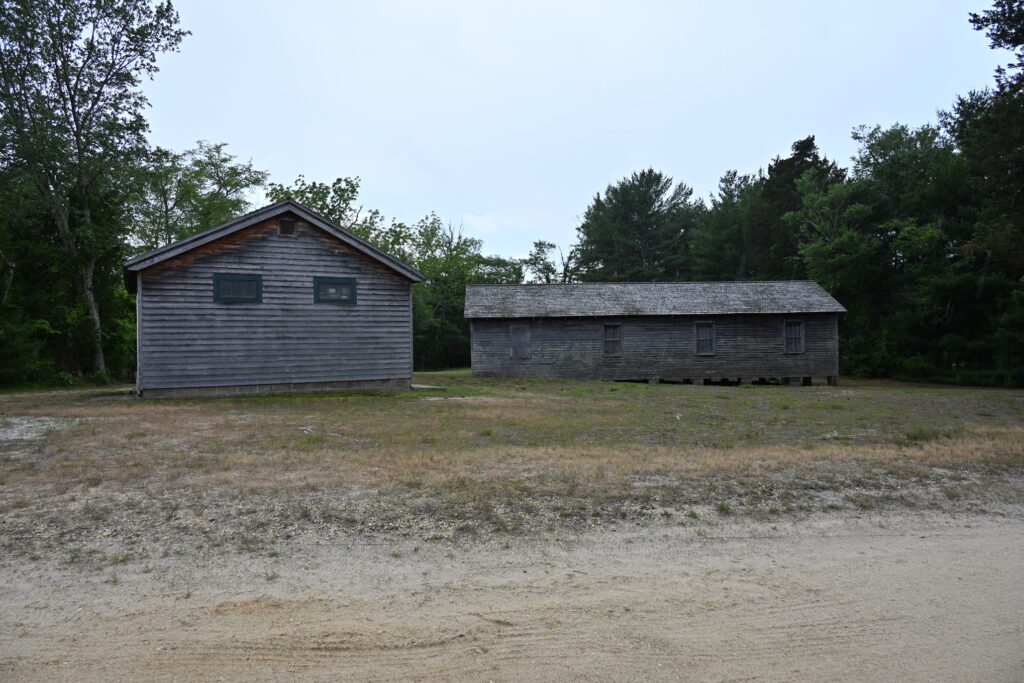
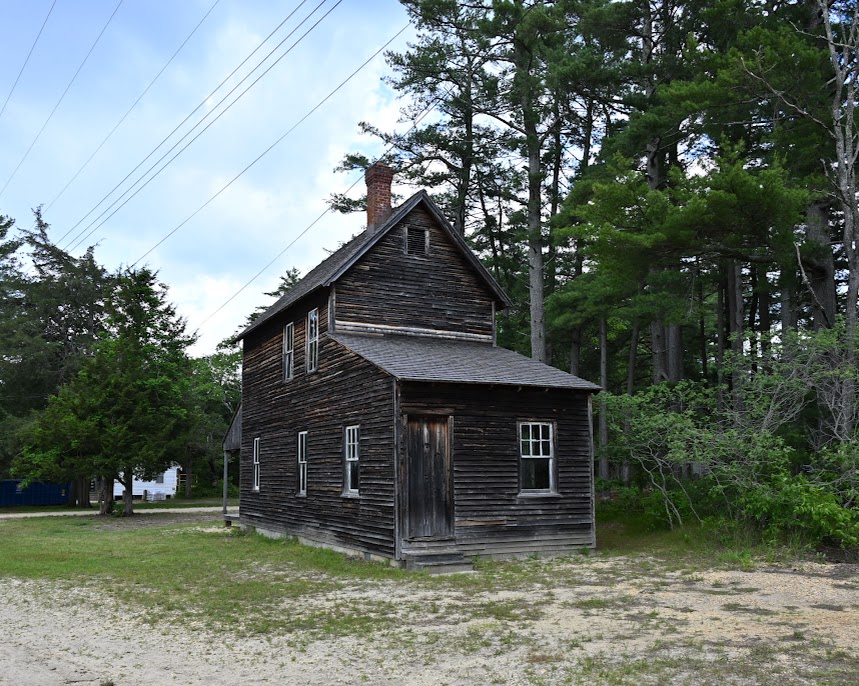
Trails
Double Trouble has eight miles of trails that can be used for hiking, mountain biking and horseback riding. As usual, we spent the day hiking.
There’s one main parking lot right at the entrance to the park where you can access both the village and hiking trails. We followed the below AllTrails route for a total of about 5.5 miles. My watch died before the end so I don’t have the exact mileage but it was close to the amount listed in the description.
Mill Pond Trail (Red)
We started with the Mill Pond Trail which takes you from the village to the Cedar Creek Reservoir. Similar to the majority of the trails in the park, this is sandy and very flat, so it makes for a nice leisurely stroll. It was mostly overcast when we were on this trail, but on a sunny day, there would be a lot of direct sunlight as the trail isn’t fully covered.
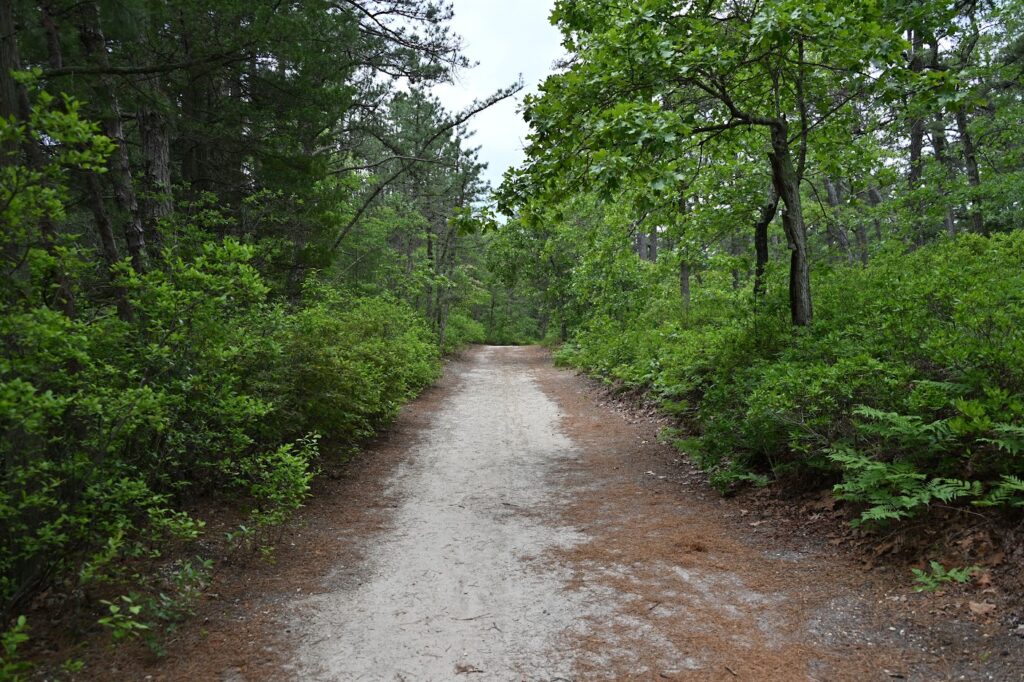
On this trail, we also learned the important role fire has played in the creation of the Pine Barrens. Controlled fires are used to clear out the fallen pine needles, twigs and branches. All of these elements create an acidic environment that oak seeds thrive in. Basically, without the fires, it’s highly likely Oak Trees would have grown instead of Pine Trees.
Eventually you’ll get to the reservoir before heading back towards the village.
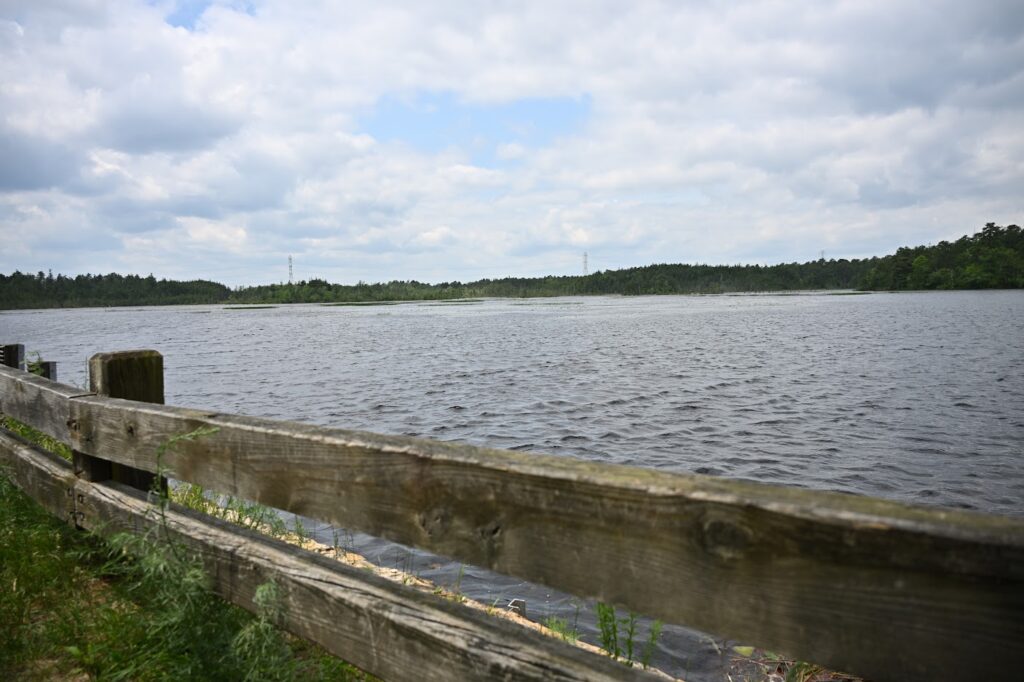
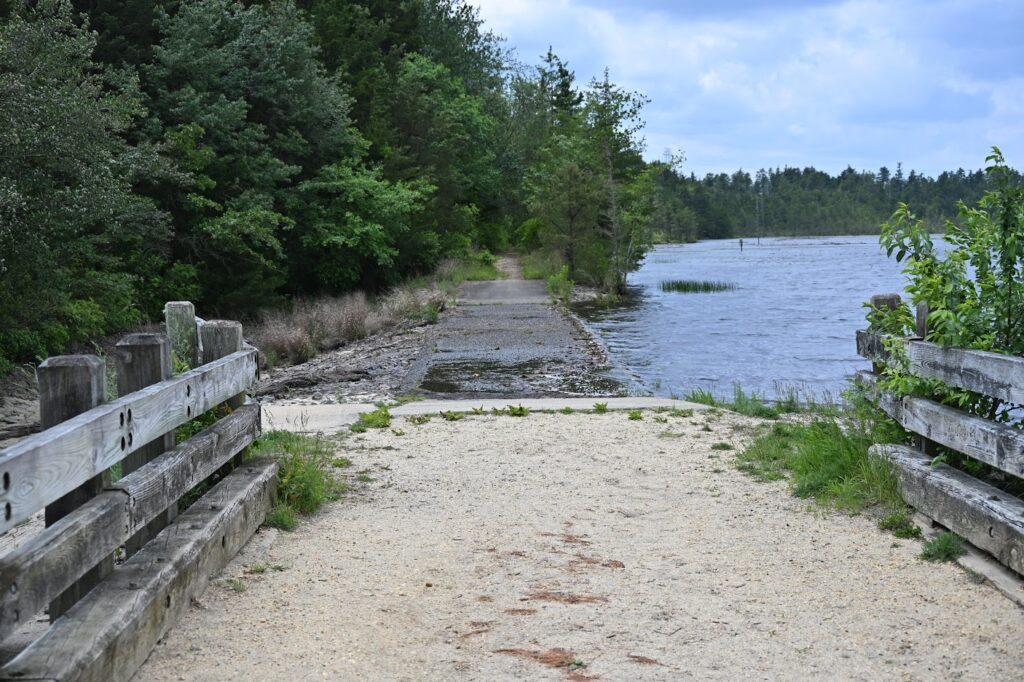
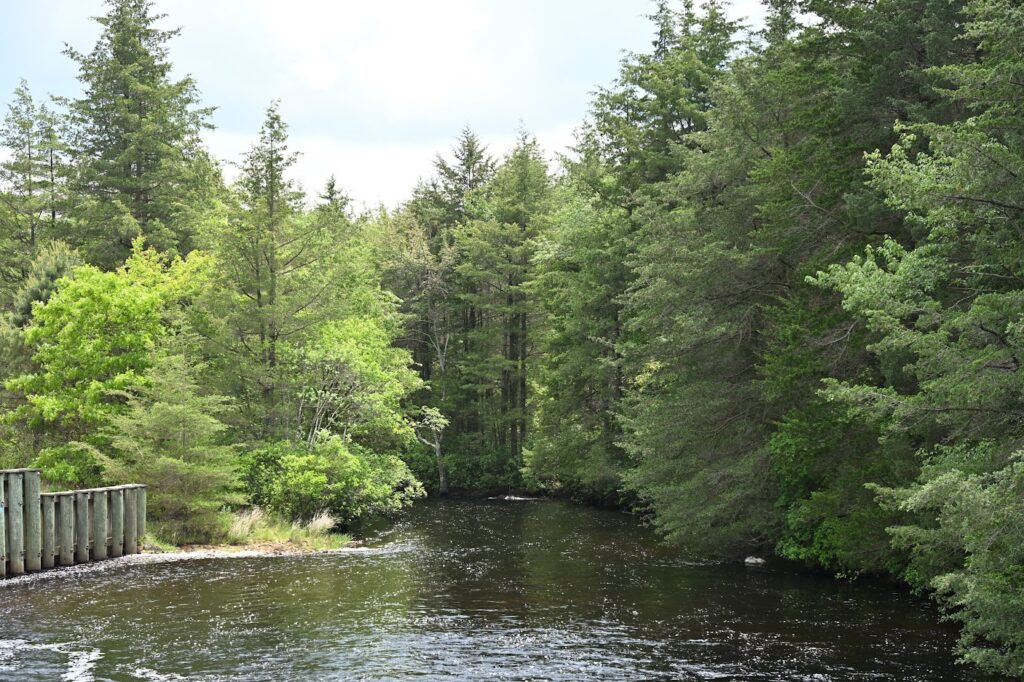
When you loop back, you can either go straight to the parking lot or continue on to the Nature Trail (Green)/Sweetwater Trail (Orange).
Nature Trail (Green)/Sweetwater Trail (Orange)
These two are actually the longest trails in the park and for a small portion, are combined as one. The Nature Trail is 1.9 miles in total, and the Sweetwater Trail is 2.5 miles.
Along the way, you’ll be treated to turtles and lilypads in Cedar Creek and beautiful flowers lining the trees.
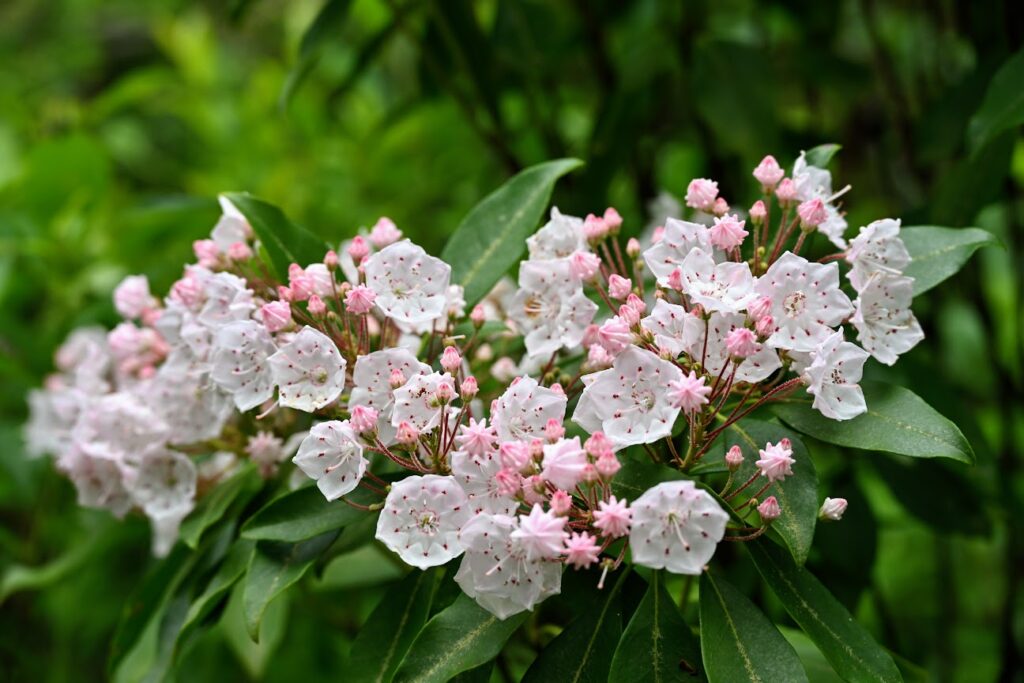
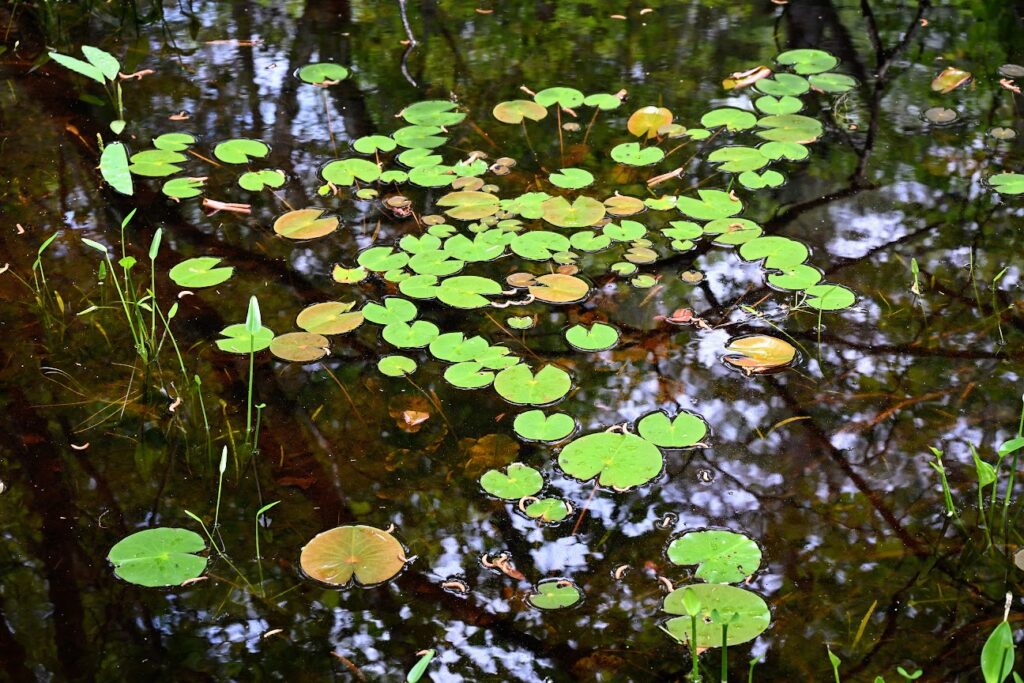
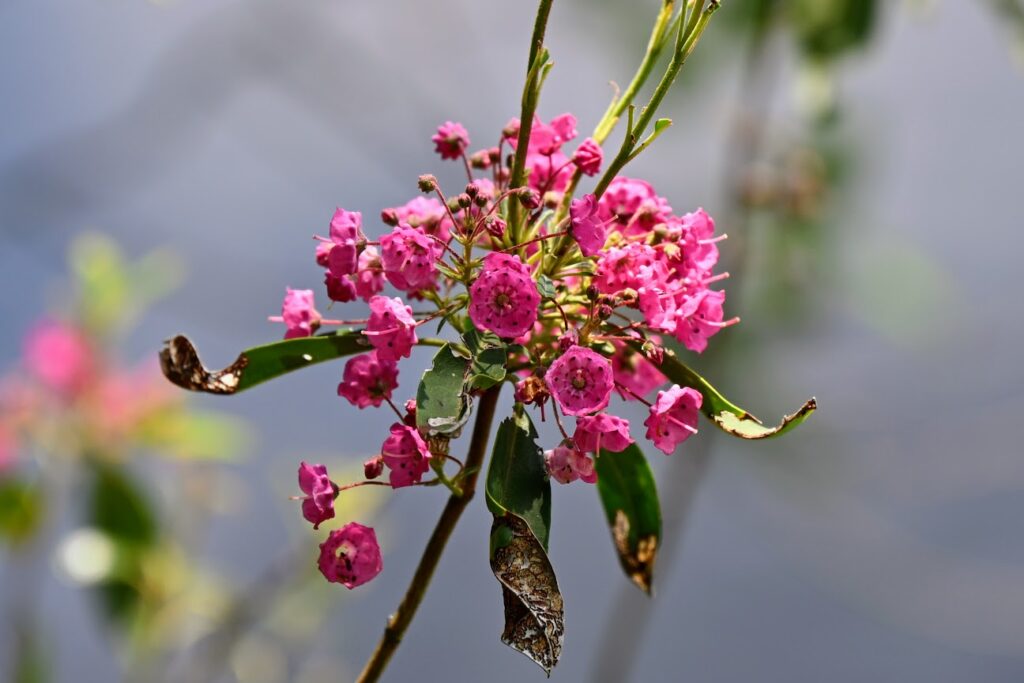
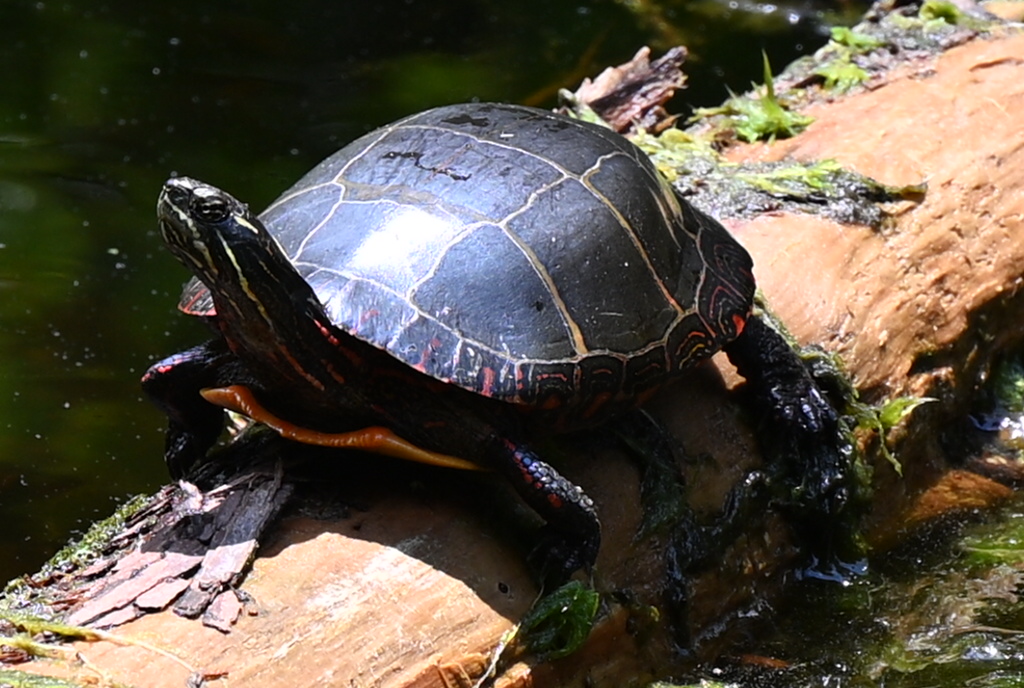
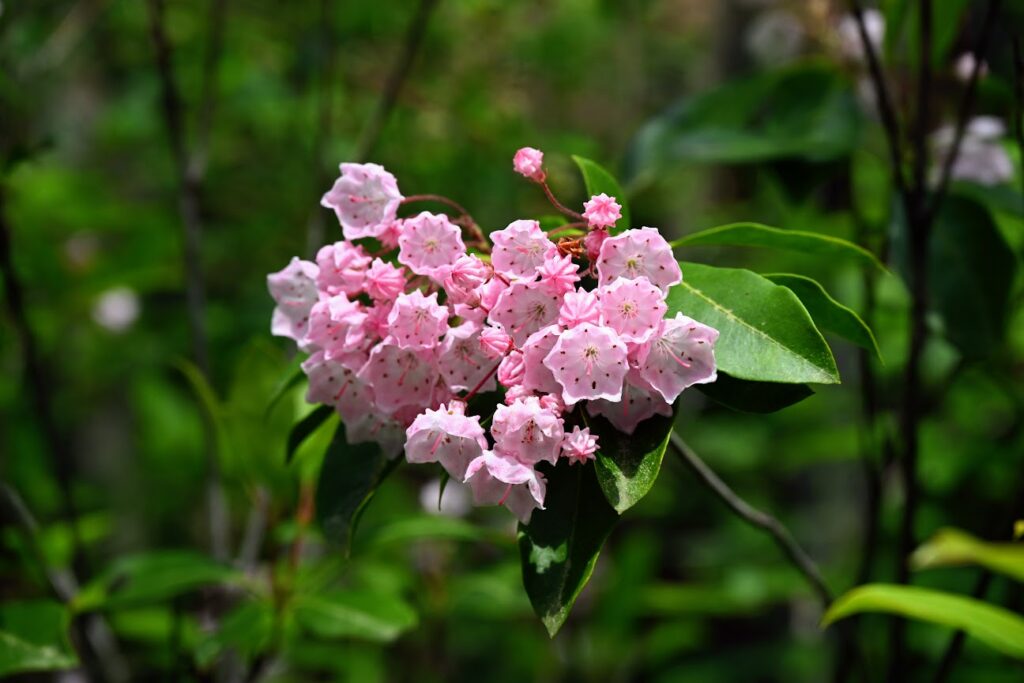
The white bridge crossing over Cedar Creek offers scenic views of the surrounding landscape and provides direct access to the water below for canoeing/kayaking.
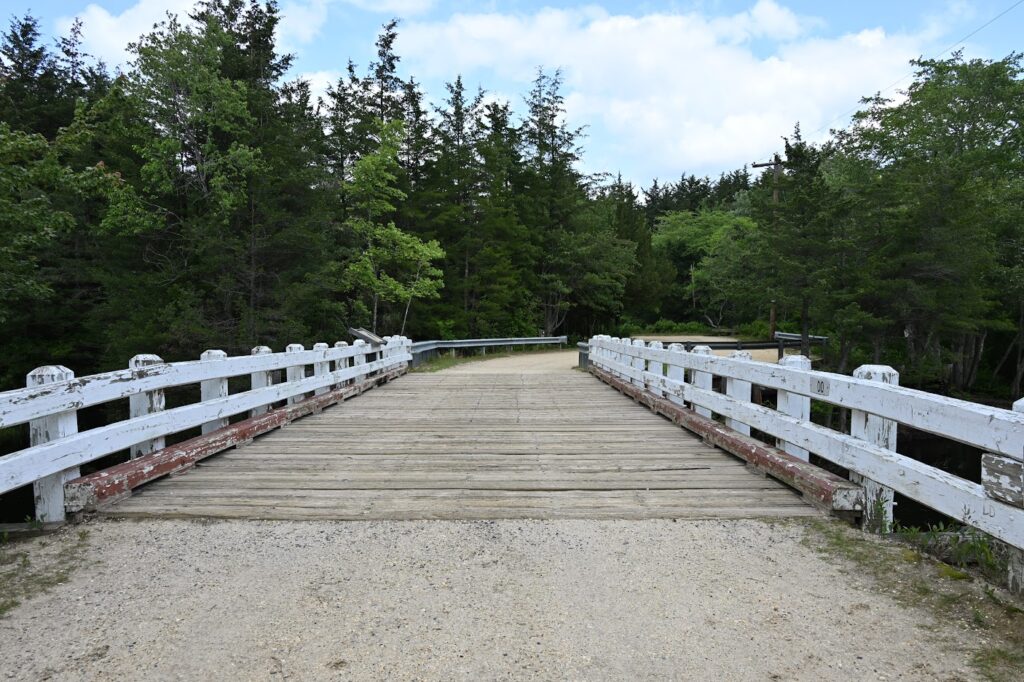
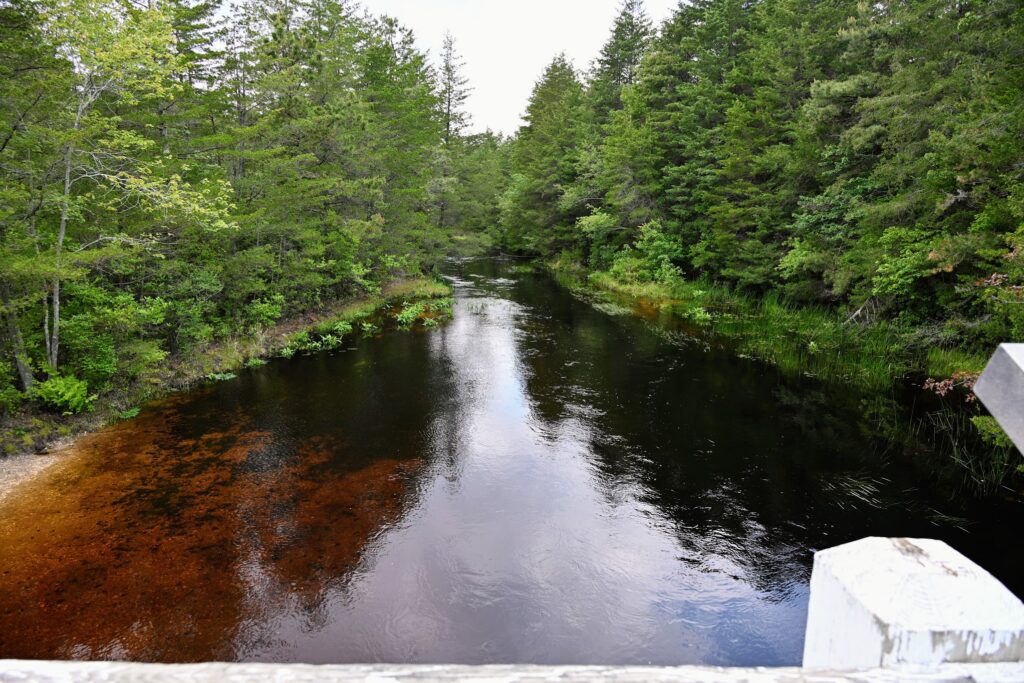
These two trails eventually split, taking two different directions back to the village. Assuming you stay on the orange trail, you’ll have the option to loop the Swordens Pond Trail (more on this next) for something a little different.
From here, the orange trail has two different landscapes. First, the Sweetwater Reservoir section is an open area with no tree cover and is a great place to birdwatch or look for more turtles. Once past that, and back under the trees, you’ll finish the trail alongside the parkway. At this point, it can be pretty loud due to all the road noise, so it doesn’t have as much of a nature feel anymore. Eventually you’ll end up back at the parking lot putting an end to the loop.
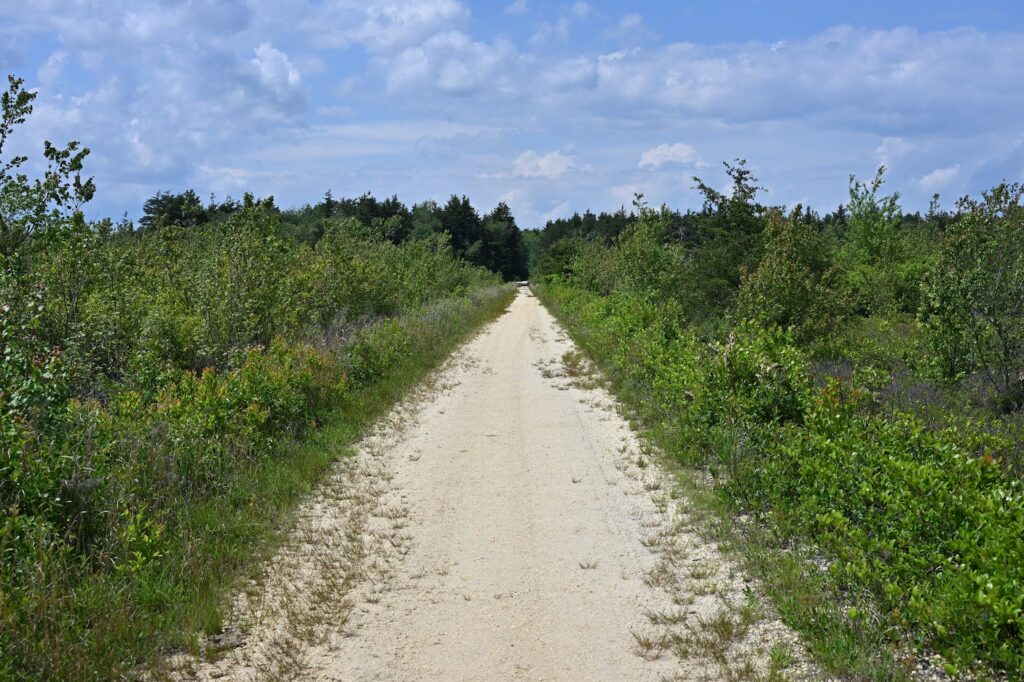
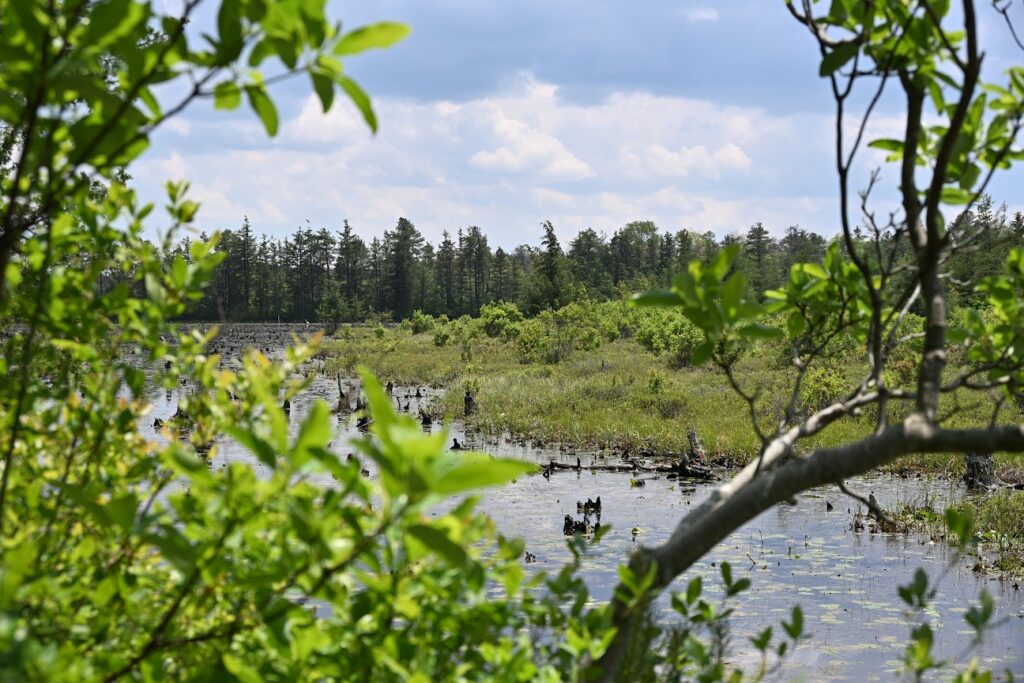
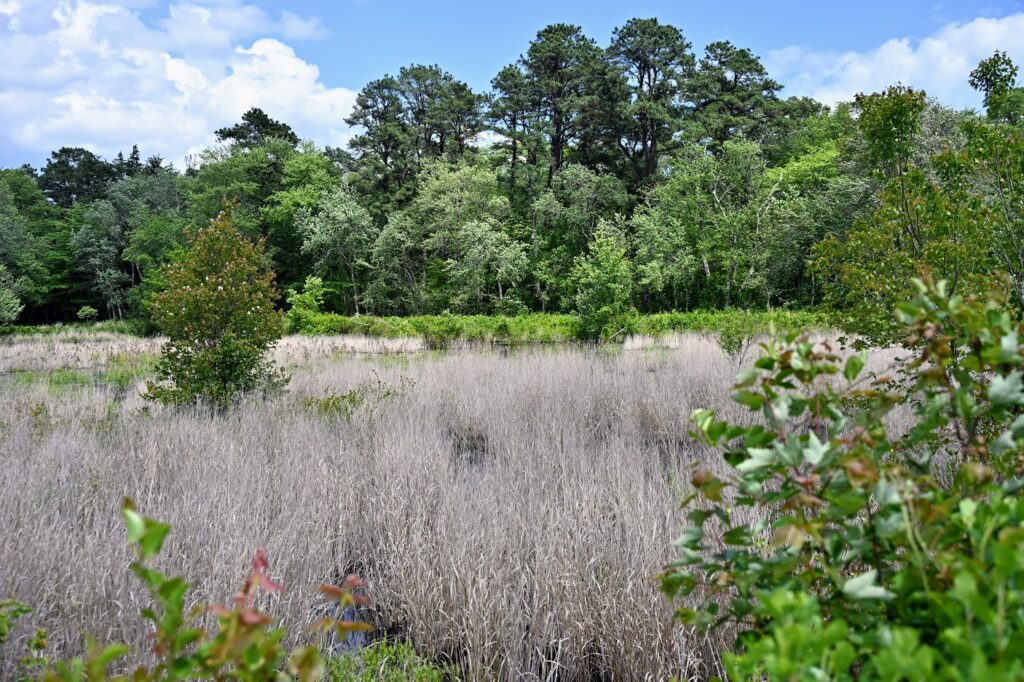
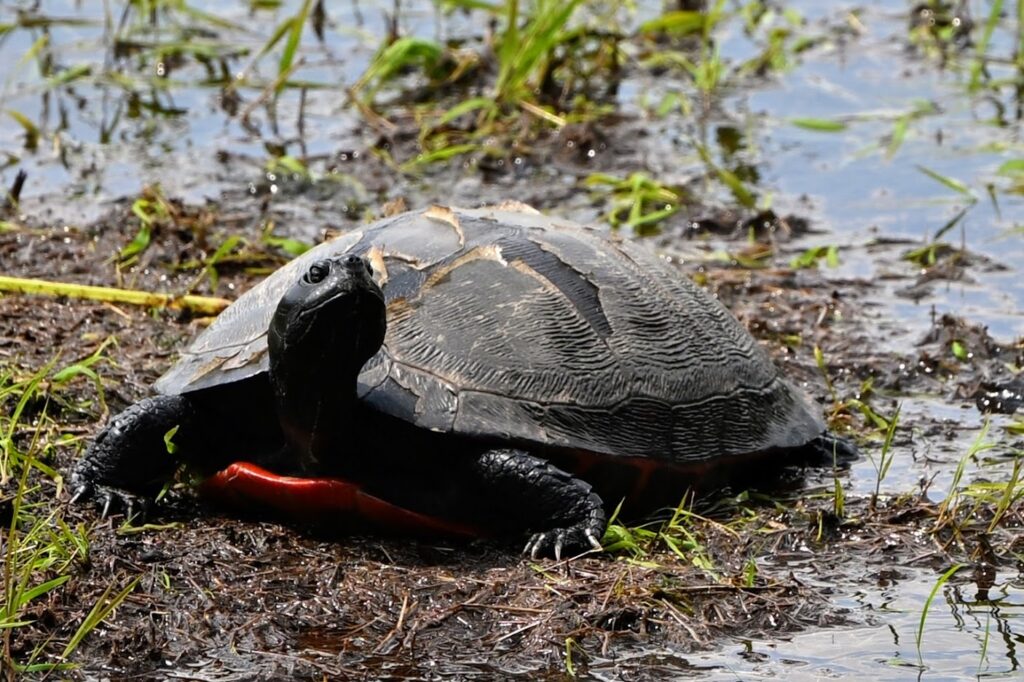
Swordens Pond Trail (Yellow)
Finally, the Swordens Pond Trail. This one is unlike any of the others in the park as it’s entirely in the forest. A much narrower trail with less sandy soil, it sort of feels like a completely different park.
This trail is relatively short at only 1.5 miles. Along the way you’ll pass by Swordens Pond, which is described as being hidden. To be honest, we didn’t see this pond at all, so I guess it’s fair to say the description is pretty accurate. Either way, this trail is a nice change of pace from the rest of the park and isn’t out of the way. It’s worth checking out if you’re up for a little bit more mileage.
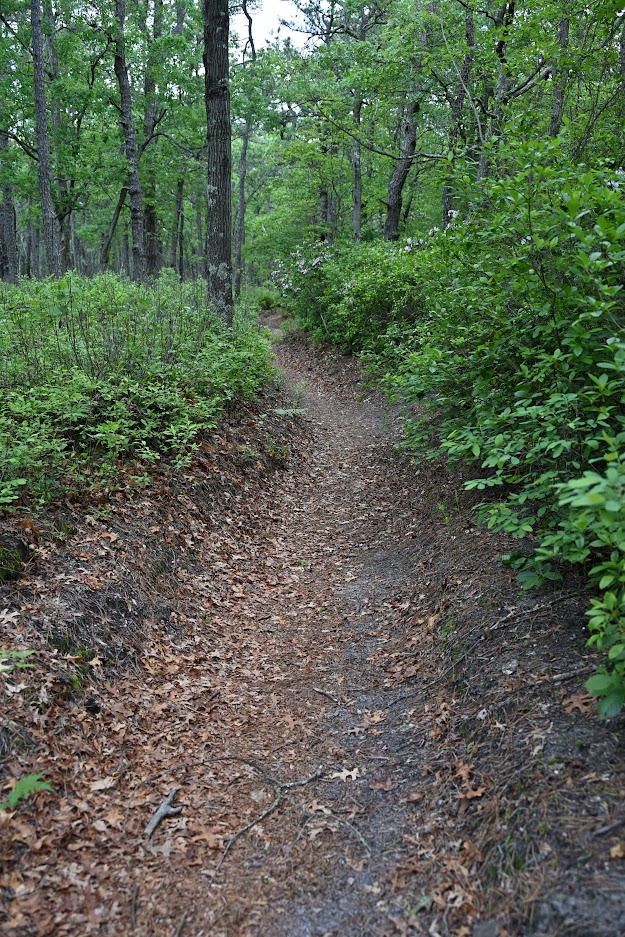
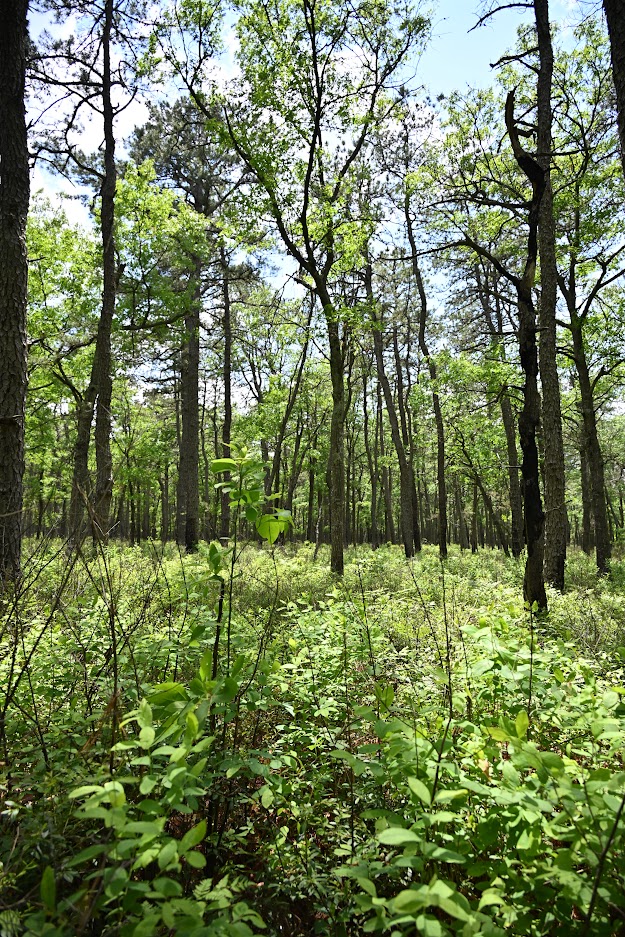
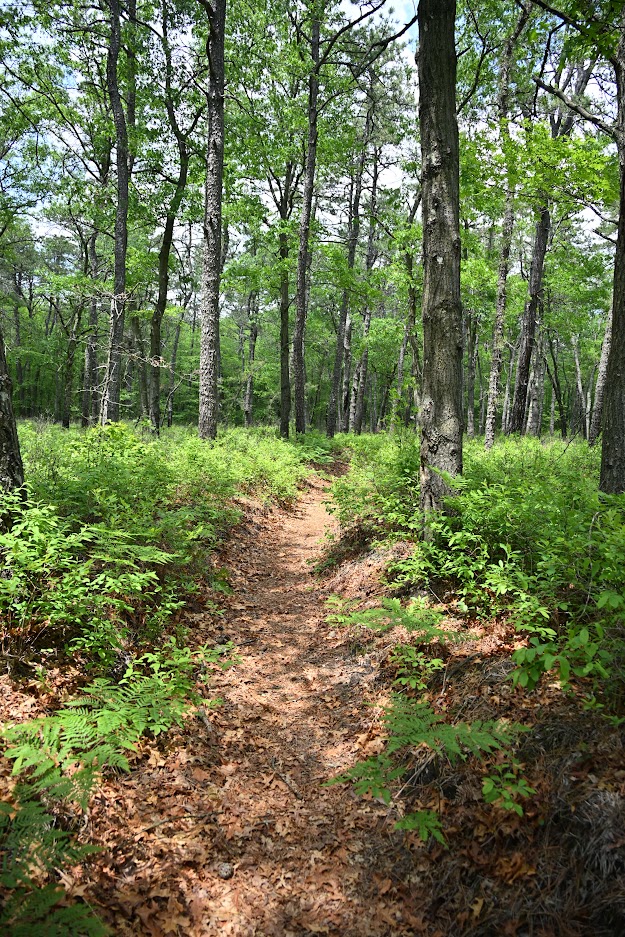
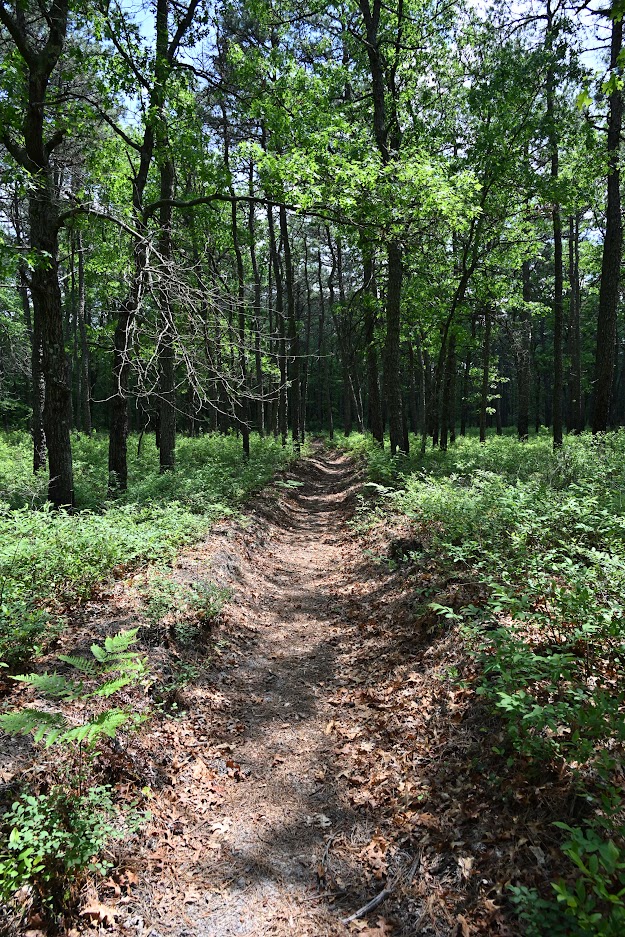
Other Activities
Besides hiking, mountain biking and horseback riding, there are plenty of other options for what you can do in Double Trouble:
Canoeing and Kayaking
Until we buy a kayak, we’ll just be hiking at these parks but canoeing and kayaking is definitely an option. You’ll be cruising along Cedar Creek but make sure to stay on your canoe/kayak as swimming is not allowed. Also, make sure to bring your own equipment as there is nowhere to rent in the park.
Fishing and Hunting
Both fishing and hunting are permitted in the park but are subject to the regulations of the New Jersey Division of Fish and Wildlife.
Closing Thoughts
For a quick introduction to the NJ Pine Barrens, Double Trouble is a great start. Whether you’re interested in the cranberry history or just looking for nice trails to spend a few hours on, this park has enough to keep you entertained.
Brendan T. Byrne State Forest
Following Double Trouble, our next stop was Brendan T. Byrne State Forest (going to abbreviate to BTB for the rest of the post).
Located in the northern section of the Pine Barrens, BTB sits just west of Double Trouble and is the second largest state forest in NJ covering over 38,000 acres. Included in that is the Whitesbog Village, where both cranberry and blueberry production was the main focus.
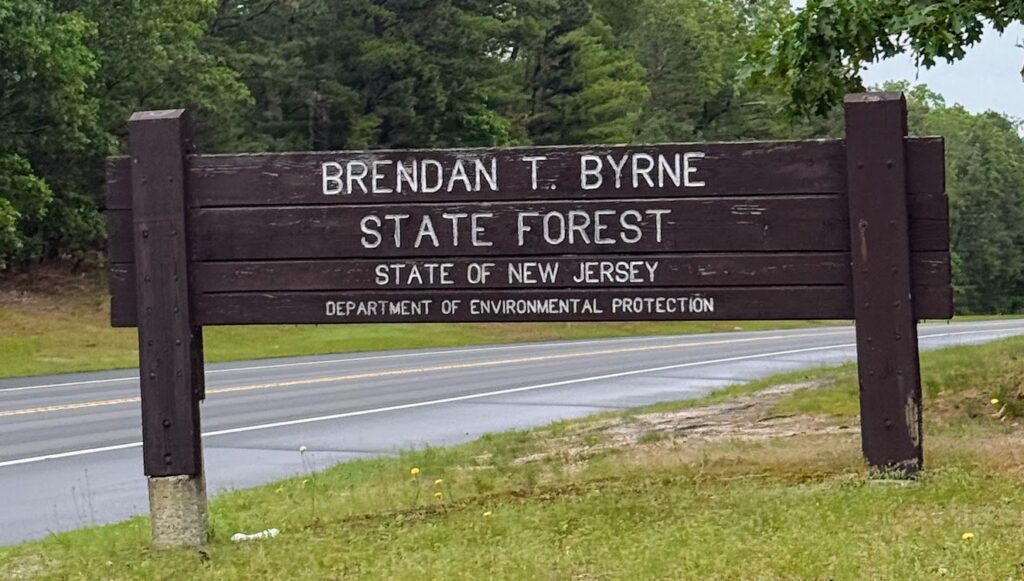
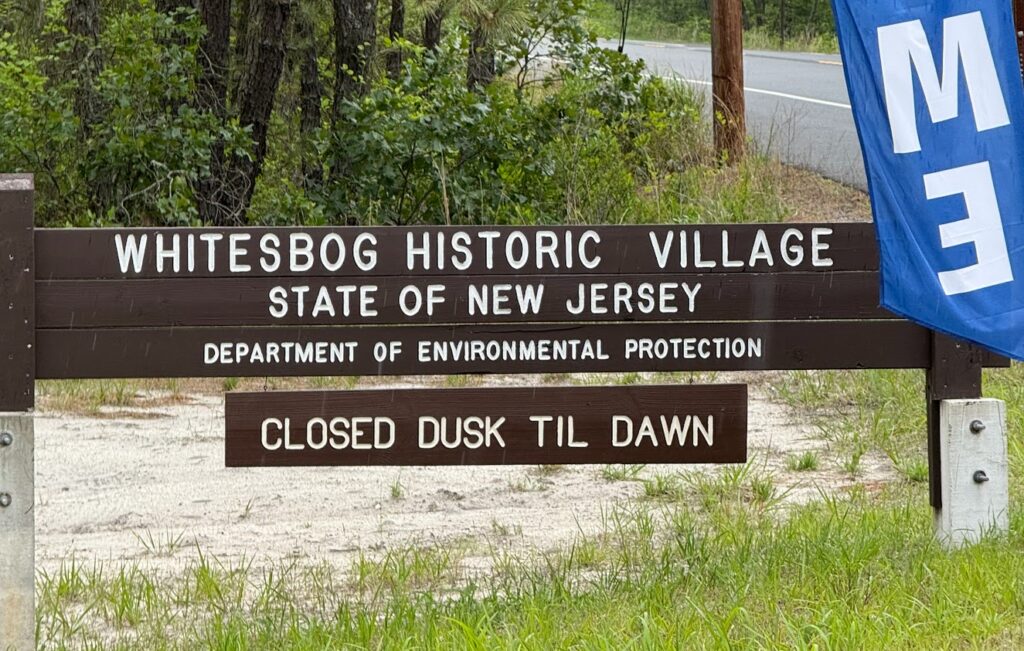
Whitesbog Village
Trails
BTB State Forest is made of over 40 miles of multiuse trails. When I say multiuse, I don’t just mean the normal hiking, biking and horseback riding. This park has one trail meant for cars as well. Like the rest of the Pine Barrens, these trails are sandy, filled with pine needles and surrounded by pine, oak and cedar trees.
Batona Trail
Let’s start with the Batona Trail. This is an interesting one as it’s a 50 mile long trail, with 10 of those miles winding through BTB. The rest of the trail goes through other sections of the Pine Barrens such as Bass River State Forest and Wharton State Forest. The name actually means BA-ck TO Na-ture.
